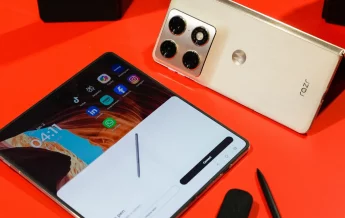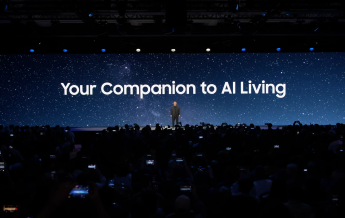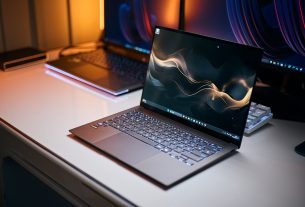
iPhone 17 Rumors Point to Apple’s Biggest Redesign in Years: What Tech Enthusiasts Should Know
Apple may still be a month away from unveiling the iPhone 16 series, but buzz around the iPhone 17 lineup is already taking over tech circles. According to early rumors and reports, the 2025 iPhone generation could usher in the biggest visual and functional overhaul since the iPhone X. For tech enthusiasts and gadget lovers, the iPhone 17 family promises more than incremental upgrades, it teases a redefinition of the iPhone identity itself.
From a completely new ultra-thin model called the “iPhone 17 Air” to an entirely reimagined camera layout and the possibility of groundbreaking AI integrations, Apple seems poised to match (and possibly surpass) the innovation curve set by its Android competitors. Here’s what we know so far and why the iPhone 17 may be the one to watch.
The Lineup: Meet the iPhone 17 Family

The iPhone 17 range is rumored to consist of four models:
- iPhone 17
- iPhone 17 Air (replacing the Plus model)
- iPhone 17 Pro
- iPhone 17 Pro Max
The most notable newcomer here is the iPhone 17 Air, which would replace the iPhone 15/16 Plus series and introduce a new design tier aimed at users who want powerful specs in a sleeker, slimmer form factor. The Air is expected to sit somewhere between the base model and the Pro line in terms of price and performance.
Design Refresh: A New Era of Minimalism and Function

One of the boldest changes expected in the iPhone 17 line is a significant redesign. Apple is reportedly working on a thinner and lighter chassis across the lineup. The iPhone 17 Air, in particular, is rumored to be the thinnest iPhone ever, clocking in at just 5.5mm in thickness, even thinner than the already slim iPad Air.
In addition to slimming down, Apple is rumored to be introducing a revamped rear design featuring a horizontal camera bar on the Pro models, departing from the diagonal or triangular setups seen since the iPhone 11. This new horizontal camera array could enhance image stabilization and reduce lens protrusion.
The front of the devices may also undergo changes. Apple might shrink the Dynamic Island further or integrate Face ID under the display in at least one model, possibly the Pro Max, continuing its trend toward more immersive screens.
Display Technology: ProMotion for All?
A major criticism of Apple’s non-Pro models has been the absence of high-refresh-rate displays. That could change with the iPhone 17 series. Sources suggest that even the base models, including the iPhone 17 Air, could finally support ProMotion with 120Hz refresh rates. If true, this would deliver smoother animations, improved responsiveness, and better battery efficiency due to adaptive refresh scaling.
The displays themselves are expected to feature LTPO OLED panels with improved brightness, anti-reflective coatings, and even better durability. Sizes will remain familiar, with the Air likely offering a 6.6-inch panel and the Pro Max continuing at 6.7 inches.
Camera System: A New Visual Identity

Apple’s camera systems have always been a major selling point, and the iPhone 17 could take things even further. The horizontal camera bar is more than a design decision. It could signal a new layout of lenses and sensors that supports spatial video, periscope-style zoom, and real-time computational photography powered by AI.
Improvements are expected across all models:
- Larger sensors for better low-light performance
- Improved LiDAR scanner on Pro models
- Ultra-wide camera upgrades
- Enhanced cinematic video features
Rumors also hint at Apple possibly integrating a next-gen image signal processor in the new A-series chip to handle AI-enhanced photography, background segmentation, and real-time scene optimization.
Performance: Enter the A19 Chip and AI Integration
The iPhone 17 Pro models are expected to be powered by Apple’s upcoming A19 chip, built on a 2nm process by TSMC. This would mark a generational leap in both performance and energy efficiency.
The A19 chip is also rumored to be deeply optimized for on-device AI tasks, aligning with Apple’s broader push into artificial intelligence. Features could include:
- On-device Siri with contextual awareness
- Advanced text and image generation
- Live transcription and translation
- Predictive typing and app suggestions
The integration of AI across iOS 19 and the A19 chip may allow Apple to challenge AI-first phones from Google and Samsung, while preserving its strict on-device privacy standards.
Battery Life: Compromise or Innovation?
One trade-off of ultra-thin devices is often battery life. With the iPhone 17 Air expected to be extremely slim, battery capacity may be lower than current Plus models. However, improvements in the A19 chip’s efficiency and software-level enhancements could mitigate this.
Apple may also introduce stacked battery technology, allowing higher density without increasing volume. If true, this could allow even thinner devices to retain all-day battery performance.
Build Materials: Aluminum Returns, Titanium Takes a Backseat
After switching to titanium for the iPhone 15 Pro series, Apple may revert to aluminum for the iPhone 17 Pro and Pro Max. Aluminum is lighter and more malleable, which fits with the goal of producing thinner devices. It also lowers costs and allows for more colors and finishes.
Expect to see new colors, including deep blue, metallic orange, and potentially a matte black option across the lineup. Apple could also add anti-smudge coatings or textured finishes to enhance grip.
FaceTime and AR: Preparing for Vision Pro Integration
The iPhone 17 series is expected to further integrate with Apple’s broader ecosystem, particularly the Vision Pro headset. With improved ultra-wide and front-facing cameras, the new phones may act as remote inputs or capture devices for spatial video content.
There are also whispers that Apple is preparing new FaceTime features that leverage AI to clean up video, improve lighting in real time, and even enhance audio using beamforming microphones.
Storage and Connectivity: The Standard Rises
Base storage may start at 256GB for Pro models, aligning with their higher price points and increased media capabilities. Apple is likely to continue using USB-C across all iPhone 17 models, with Pro variants supporting faster USB 4.0 speeds for data transfers and pro workflows.
Wi-Fi 7 and improved 5G antennas are also expected, along with enhancements to satellite communication for emergencies.
iOS 19: Built for Intelligence and Immersion
Running alongside the new hardware will be iOS 19, expected to bring sweeping AI integrations under the branding “Apple Intelligence.” Key features could include:
- AI-summarized notifications
- Smart email and message replies
- Personalized app interactions
- Enhanced widgets and dynamic homescreens
iOS 19 will likely be optimized for ProMotion displays, adaptive refresh rates, and power efficiency, offering a cohesive experience that leverages the A19 chip’s capabilities.
A Redefining Moment for the iPhone

While Apple has maintained a steady iteration model in recent years, the iPhone 17 appears to be a watershed moment. From the introduction of the iPhone 17 Air to a possible full-blown design shift, on-device AI breakthroughs, and deeper ecosystem play, the next iPhone generation could redefine what premium smartphones look and feel like.
For tech enthusiasts, the iPhone 17 series won’t just be about new colors or camera tweaks. It may represent Apple’s most comprehensive strategy update in years: aligning cutting-edge hardware, smarter software, and bold design in one unified vision. If the rumors hold true, September 2025 will be one of the most exciting moments in iPhone history.







